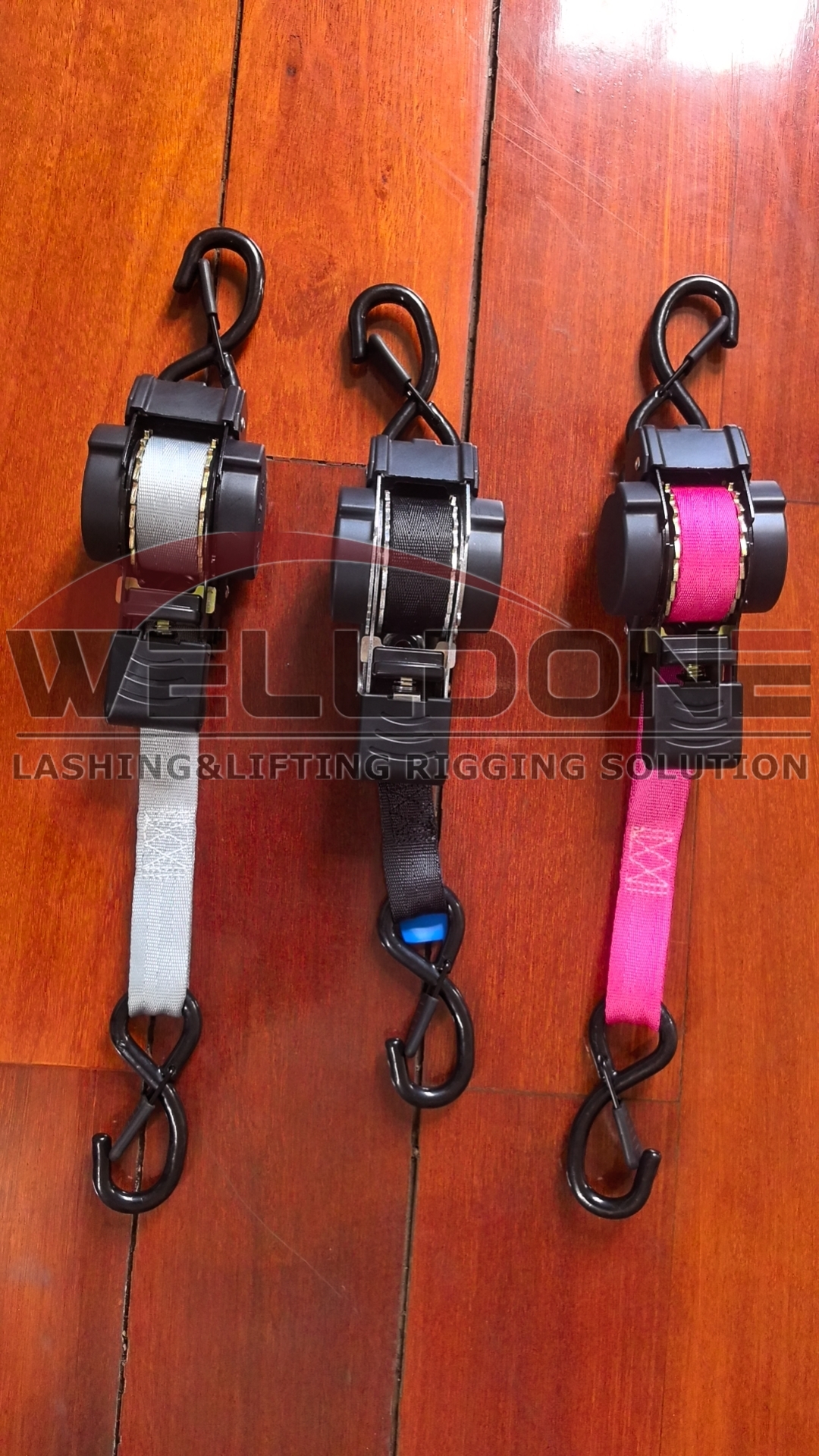What Are Slow Release Retractable Ratchet Straps?
Slow release retractable ratchet straps are an advanced type of tie-down mechanism designed to secure cargo, offering a balance of tension and controlled release. They feature a spring-loaded retraction system, which allows the strap to automatically wind back into a housing unit when not in use. The damping device ensures that the strap releases tension gradually, reducing the risk of sudden snapping that can lead to injuries or damage to cargo.
This slow retracting mechanism sets them apart from traditional ratchet straps, which often release tension all at once, sometimes unpredictably. The retractable function, meanwhile, adds convenience by eliminating excess strap, which can get tangled or create a mess.
Here’s how to use it:
1. Release the Strap
- Unlock the Ratchet: First, pull the release lever (usually a small tab) to unlock the ratchet.
- Extend the Strap: Pull the strap from the retractable housing manually to your desired length. If the mechanism is spring-loaded, it will extend smoothly.
2. Position the Strap
- Place the Hooks: Attach the hooks (typically on either end of the strap) to a secure anchor point on the cargo and the truck bed or trailer.
- Wrap the Strap: Ensure the strap goes over the cargo or through loops, securing the load tightly.
3. Tighten the Strap
- Feed the Strap into the Ratchet: Slide the loose end of the strap into the slot on the ratchet mechanism.
- Crank the Ratchet: Use the handle to crank the ratchet back and forth. Each motion will pull the strap tighter, securing the cargo in place.
4. Slow Release Feature
- Use the Release Lever: Once your cargo is secured and you want to remove or loosen the strap, pull the release lever again.
- Slow Release: Some retractable ratchet straps are equipped with a slow-release mechanism. Instead of the strap rapidly retracting, it will pull back slowly, which provides greater control and safety. Guide the strap as it retracts to avoid tangles.
5. Storing the Strap
- When not in use, allow the strap to fully retract into the housing. Make sure it’s clean and dry to prevent damage or wear.
Additional Tips:
- Inspect Before Use: Check for any fraying or wear on the strap before using it.
- Keep Tension Even: Ensure the strap is evenly placed across the load to prevent shifting or damage.
Post time: Oct-22-2024





